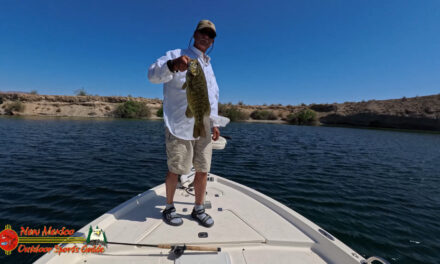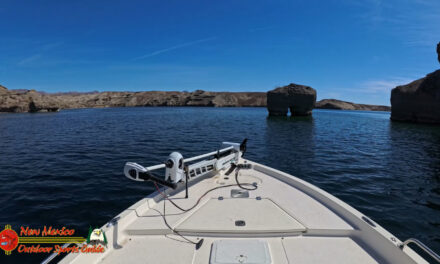Lake Conroe Dive Team – Lake Mohave
The Montgomery County Sheriff’s Department Dive Team is one of the best group of divers in the state. It is a unique organization made up of 32 members, all of whom have full-time jobs which they leave when a crisis develops. The head of the Dive Team, or the Team Dive Master, is Sergeant Robert Schuster. Schuster has led the team for the last nine years.
The Dive Team is strictly a volunteer group and all the members supply their own diving equipment and pay their own expenses. They are not county employees. They are also all from this area and were trained to dive on Lake Conroe.
“It’s important that the divers are experienced with Lake Conroe because it’s such a dark, murky lake,” says Schuster. “If you’re used to diving in the Caribbean, you won’t be able to dive Lake Conroe. We have to crawl along the bottom and feel out in front in the silt and mud for what we’re looking for in a body of water that has eight to ten inches visibility.”
When Schuster took on the job of Team Dive Master, there was no team. He was the only diver for three years until gradually he started taking on friends and neighbors who could dive Lake Conroe and had other jobs but could still be on call. Now, Schuster has five certified police officers, four paramedics and even six women as part of his team. Joy Ogden, the Directory of Montgomery County Emergency Medical Services, is one of Schuster’s divers.
The Montgomery County Dive Team has been called by every surrounding county to assist in drowning accidents or to look for evidence thrown into a body of water, such as guns, knives, stolen property, cars and boats. The Dive Team has even been called by Harris County, which has its own dive team, because of the skill of the Montgomery County Dive Team in finding what it’s looking for.
The Dive Team has pulled 17 bodies out of Lake Conroe, all of which were drowning victims. According to Schuster, when the Dive Team gets to the scene of a drowning accident, there is little hope that the victim will be found alive. “The body is brain dead in four to five minutes.”
When asked about the gruesome aspects of the job, Schuster replies “it’s a dirty job but someone’s got to do it. What really gets you is when the victim is a child.” In addition to dealing with the limited visibility, you need a strong stomach to do this job. Schuster adds “it’s the same thing you have to deal with as an Emergency Medical Technician”.
In the winter of ’91, an inmate of the Texas Department of Corrections escaped from prison and shot a store clerk and a female customer in San Jacinto County. He then threw the gun in the Trinity River and flew to Florida where he was apprehended. Schuster was called to find the gun and his team got to work. They found the gun in the murky waters of the Trinity River in three hours.
On the day after Christmas in 1990, the Dive Team was called to Patton Village, on the east side of Montgomery County, to find seven empty safes in a private lake. The safes were needed by the City of Mont Belvieu and Montgomery County to make a case against the convenience store robbers who drove into the stores and dragged the safes out. All seven safes were recovered from the snake- and alligator-infested lake.
When Schuster is not diving for Montgomery County or any other county, he repairs ambulances at his specialty shop. It is the only ambulance repair shop in the state and he gets ambulances from Mont Belvieu, Cypress Creek, Montgomery County, Trinity County, Harris County Emergency Corps, and from as far away as Hall County near Amarillo. He gives up many an evening or weekend to repair the these trucks because, he says, when someone needs a truck repaired, it’s only a matter of time before there is a crisis.
Two of Schuster’s employees at the shop are also divers and Schuster says that these two divers are two that he can usually count on to dive when he gets the call because they are almost always available.
Schuster, who is a deputy sheriff, patrols the waters of Lake Conroe much like the Marine Division (see “The Boat Police”) in hopes of preventing a drowning. If you should spot him in a county boat on the lake, say a little prayer. It’s a dirty job, but someone’s got to do it. – Lake Mohave
Read More


 The Corpus Christi event, held on Jan. 28, drew a crowd of 2,500, including 1,000 children who attended the Kidfish seminar during the event.
The Corpus Christi event, held on Jan. 28, drew a crowd of 2,500, including 1,000 children who attended the Kidfish seminar during the event. McCarty began his illustrious fishing career when he became involved with B.A.S.S. tournaments held on Toledo Bend Reservoir, Sam Rayburn Reservoir and Lake Livingston 25 years ago. He fished B.A.S.S. for five years and then dropped out of tournament fishing to pursue a successful career in construction in Houston. But the passion to fish brought him back to fishing local tournaments on Lake Conroe where he lives with his wife, Paulette, and daughter, Kelly, in Shadow Bay where he can fish off his back porch in Weir’s Creek every day.
McCarty began his illustrious fishing career when he became involved with B.A.S.S. tournaments held on Toledo Bend Reservoir, Sam Rayburn Reservoir and Lake Livingston 25 years ago. He fished B.A.S.S. for five years and then dropped out of tournament fishing to pursue a successful career in construction in Houston. But the passion to fish brought him back to fishing local tournaments on Lake Conroe where he lives with his wife, Paulette, and daughter, Kelly, in Shadow Bay where he can fish off his back porch in Weir’s Creek every day.



